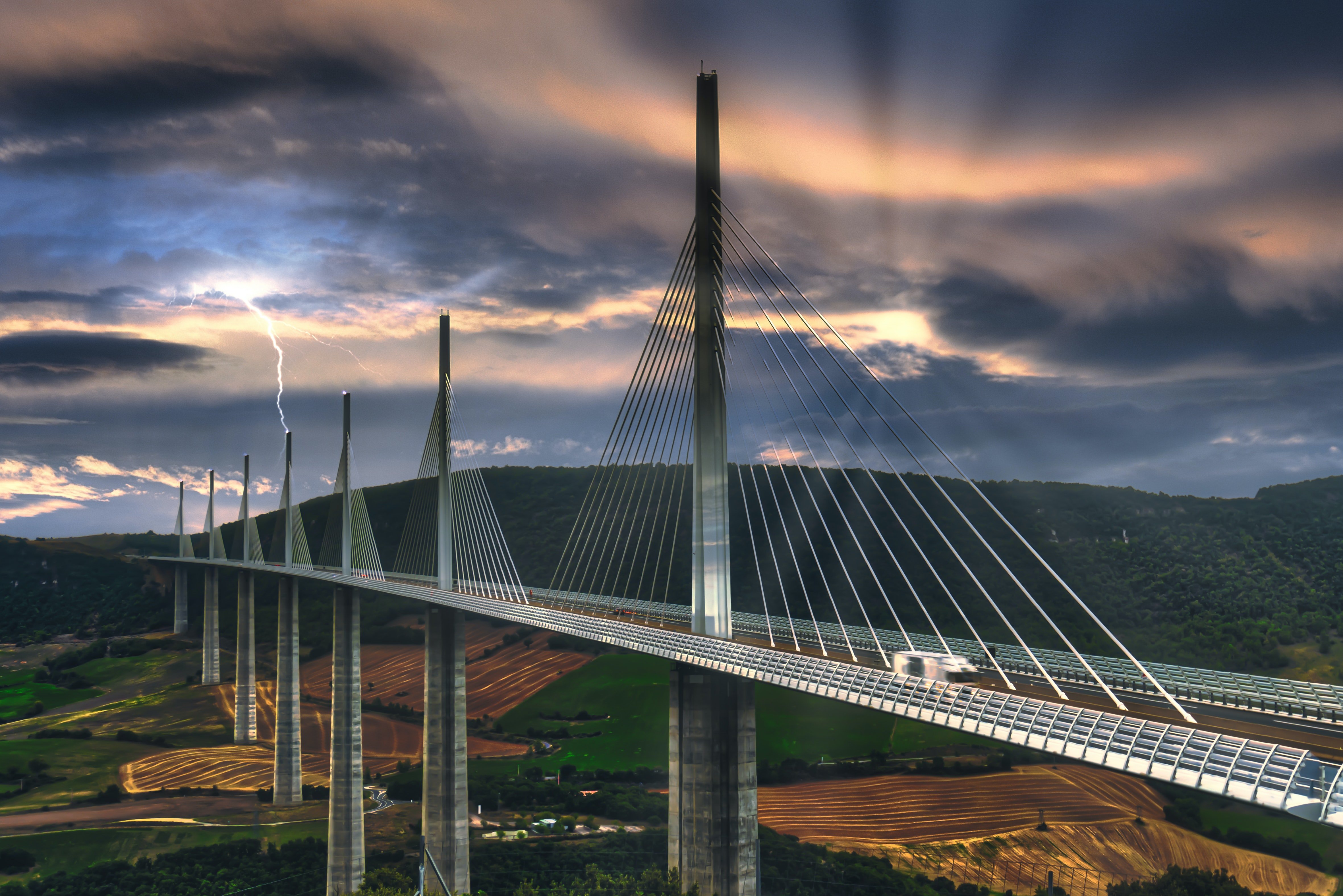Introduction
"We are on a highway to climate hell with our foot on the accelerator." - António Guterres, Secretary-General of the United Nations
Weather plays a pivotal role in the construction industry. Unpredictable conditions, compounded by the looming threat of climate change, demand heightened preparedness and strategic responses. According to a study by the Multidisciplinary Digital Publishing Institute (MDPI), weather conditions affect 45% of construction projects worldwide. This has cascading financial implications, incurring billions in unforeseen costs and lost revenues. But what exactly constitutes these weather risks, and how can contractors rise above them?
Delving Deeper into Weather Risks
in Construction
Here are some common weather risks:
1. Extreme Temperatures 🚒
Both ends of the temperature spectrum come with distinct challenges:
- Delays: Extremely hot or cold conditions can hamper the pace of construction, resulting in project hold-ups.
- High temperatures: They can cause concrete to cure too swiftly, leading to cracks and reduced durability.
- Extremely cold temperatures: They can affect materials differently. Mortar, for instance, can freeze and fail to bond adequately with bricks. Such conditions also make metals brittle and susceptible to breaking.
- Worker Welfare: Extreme temperatures can jeopardise the health of construction workers. While the cold can cause hypothermia, frostbite, and respiratory problems, extreme heat might result in heat strokes, exhaustion, and dehydration.
2. Precipitation Risks ⛈️
Rain and snow can significantly influence construction dynamics.
- Delays: Activities might be paused due to heavy precipitation, pushing the project's timeline.
- Material Costs: Weather elements can damage construction materials, necessitating replacements and inflating costs.
- Worker Welfare: Wet and slippery conditions can compromise worker safety and comfort, leading to potential health issues and accidents.
3. High Wind Risks 💨
Winds, especially when strong, pose multiple threats.
- Structural Damage: Unfinished structures are vulnerable to toppling, or debris might be blown onto them.
- Delays: High winds can mandate work stoppages for safety considerations.
- Worker Welfare: Gusts create perilous conditions, heightening the risk of accidents and injuries.
Do you want to learn more?
Find out more about climate change impact and our roadmap to becoming a climate-resilient contractor now!
Download our ebook now: Weather Risk Management: A Guide to Becoming a Climate-resilient Contractor.

The Solution: Embracing Weather Risk Management
Weather risk management isn't about controlling the uncontrollable but more about strategizing for its implications. This process entails devising and enacting a robust plan to mitigate weather's impact on projects. The key here is staying informed. Monitoring weather forecasts allows for on-the-fly adjustments to project schedules or budgets, pre-empting extreme weather disruptions. In essence, weather risk management not only minimises disruptions but also empowers project managers with real-time decision-making capabilities.
The Imperative of Climate Risk Management
With climate change amplifying weather extremes—from soaring temperatures and torrential downpours to fierce winds—it's ever more crucial for contractors to be equipped with knowledge. Being proactive, as all seasoned professionals know, is the most economically prudent risk management tactic.

(Image Simpson et al, 2021)
Leveraging Technology for Enhanced Assessment
Advanced digital tools and data-driven models are becoming increasingly integrated into construction risk management. These technological innovations not only improve the accuracy of weather forecasts but also optimise the construction process in real-time by accounting for unpredictable weather events.
Digital Weather Analytics Solutions
With advanced technologies, we can now process vast amounts of historical and real-time weather data faster than ever.
Here are some examples:
- Artificial Intelligence and Machine Learning: By analysing patterns in historical weather data, AI and ML algorithms can predict potentially disruptive weather events.
- Internet of Things (IoT): IoT sensors on construction sites can monitor real-time environmental conditions. When integrated with digital weather analytics platforms, these sensors can trigger alerts for impending adverse weather, ensuring that the site is always a step ahead.
- Augmented Reality (AR) and Virtual Reality (VR): AR and VR tools can be used for training purposes, preparing workers for potential weather-related challenges.
- Drones: Drone technology can be employed to monitor construction sites from above, capturing real-time images before, during, and after weather events. This aerial surveillance can help assess the impact and plan recovery actions more efficiently.

(Image: Global Trade, 2023)
What if EHAB Was the Solution for You!
Despite these technological leaps, predicting weather with absolute certainty is still an elusive goal. EHAB stands out by confidently ensuring project completion on time, pinpointing potential delays with a precision unmatched by any forecasting model in our current unpredictable climate era. EHAB offers glimpses into possible weather outcomes and delivers assurance and reliability. Beyond mere risk management, EHAB empowers you to optimise operations, safeguard your assets, and ensure the welfare of every team member. If you've been grappling with the uncertainties of a climate-changed world, maybe it's time to ask yourself: What if EHAB was the solution I've been searching for?
If you want to get started now, we offer a free tool for short term planning, you can sign up here.
Conclusion
As climate change amplifies, the construction industry stands at the forefront of resilience and adaptability. While weather unpredictability challenges nearly half of global construction projects, it also unveils opportunities for innovation and growth. Technologies such as AI and drones signify the industry's proactive shift. Solutions like EHAB announce the next level of weather preparedness, merging foresight with real-time adaptability. The era ahead isn't just about weathering the storm, but transforming challenges into opportunities for excellence. With EHAB's reliability and precision, the industry can take action to adapt and evolve with more resilient practices.




